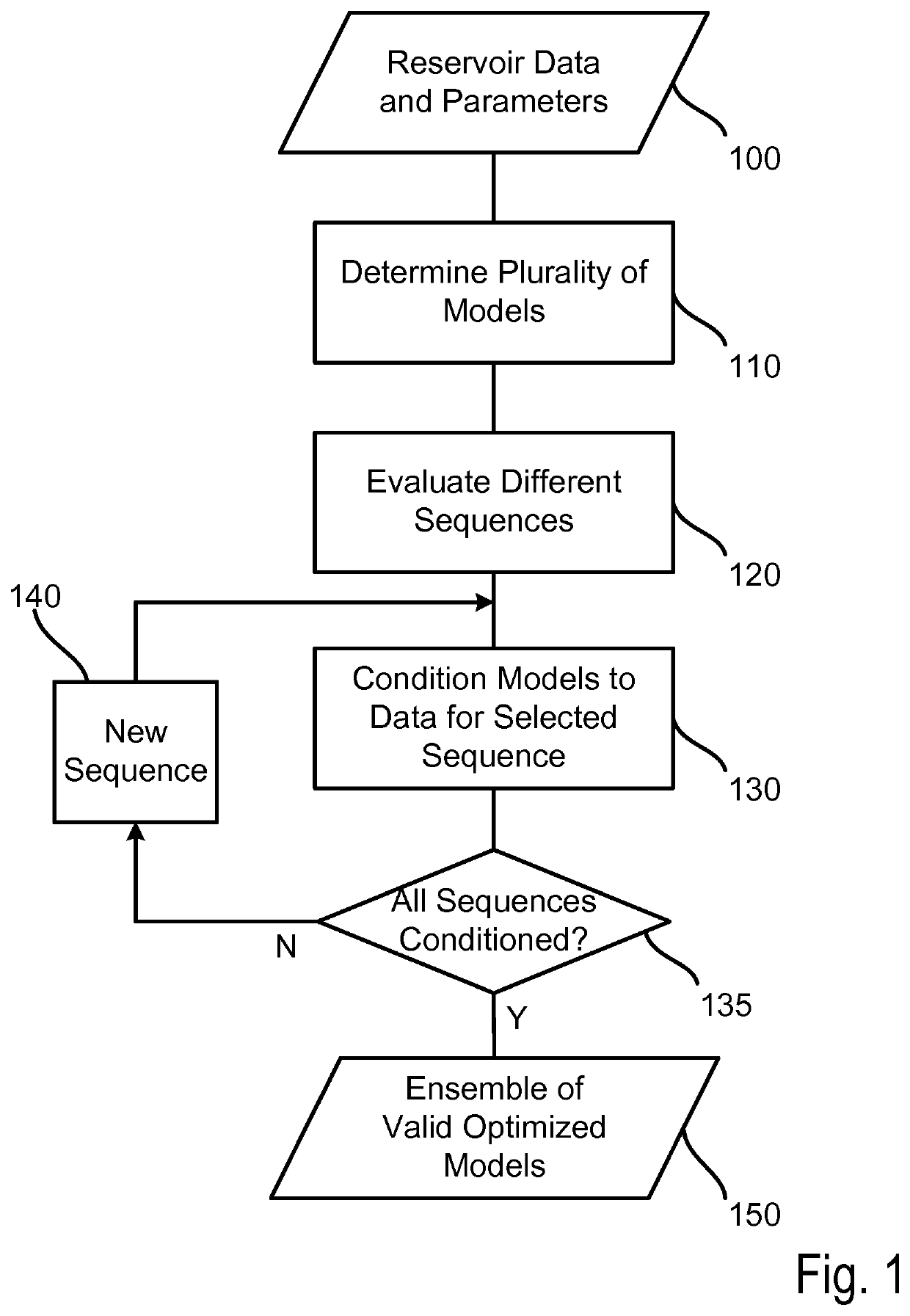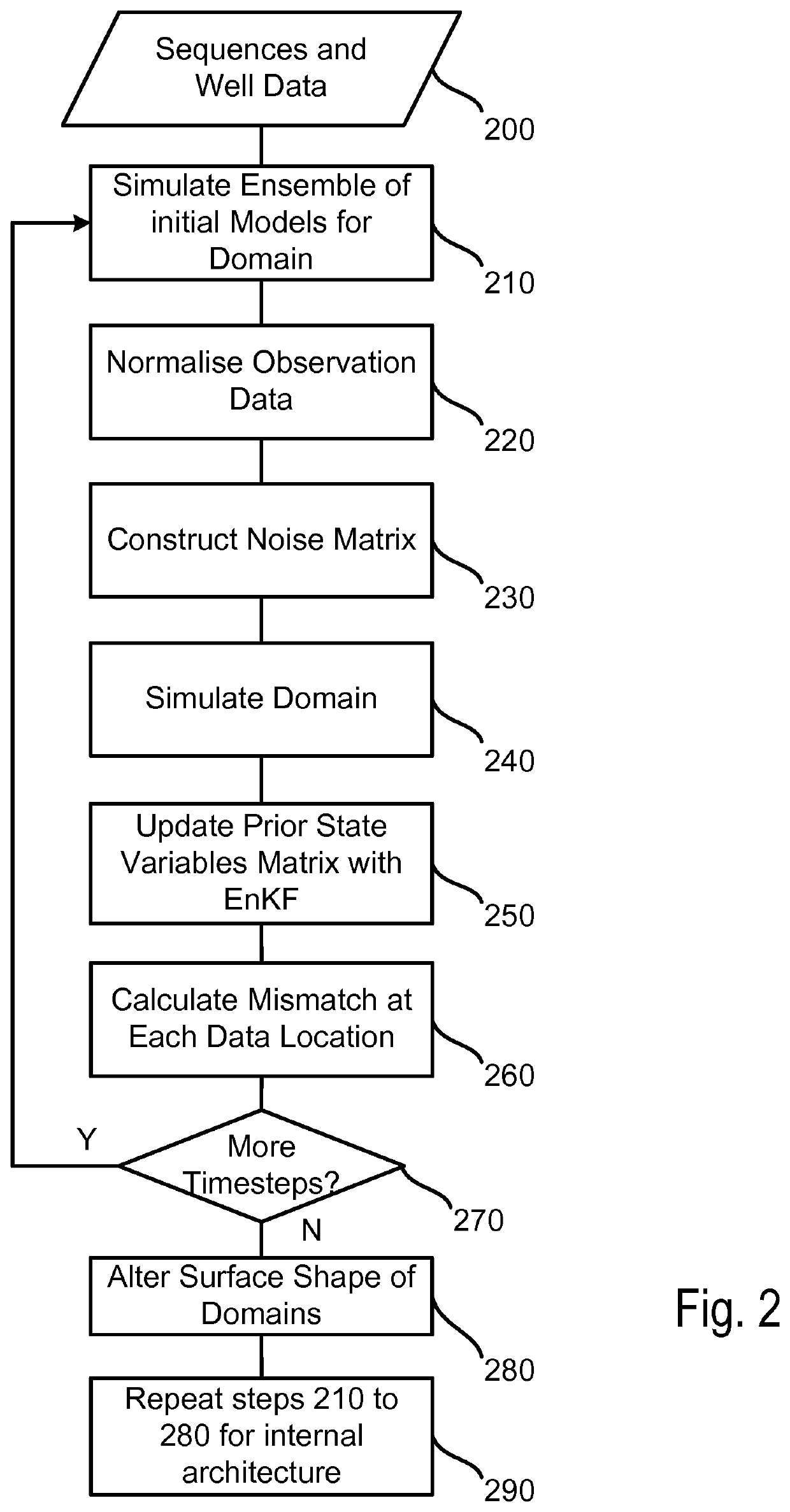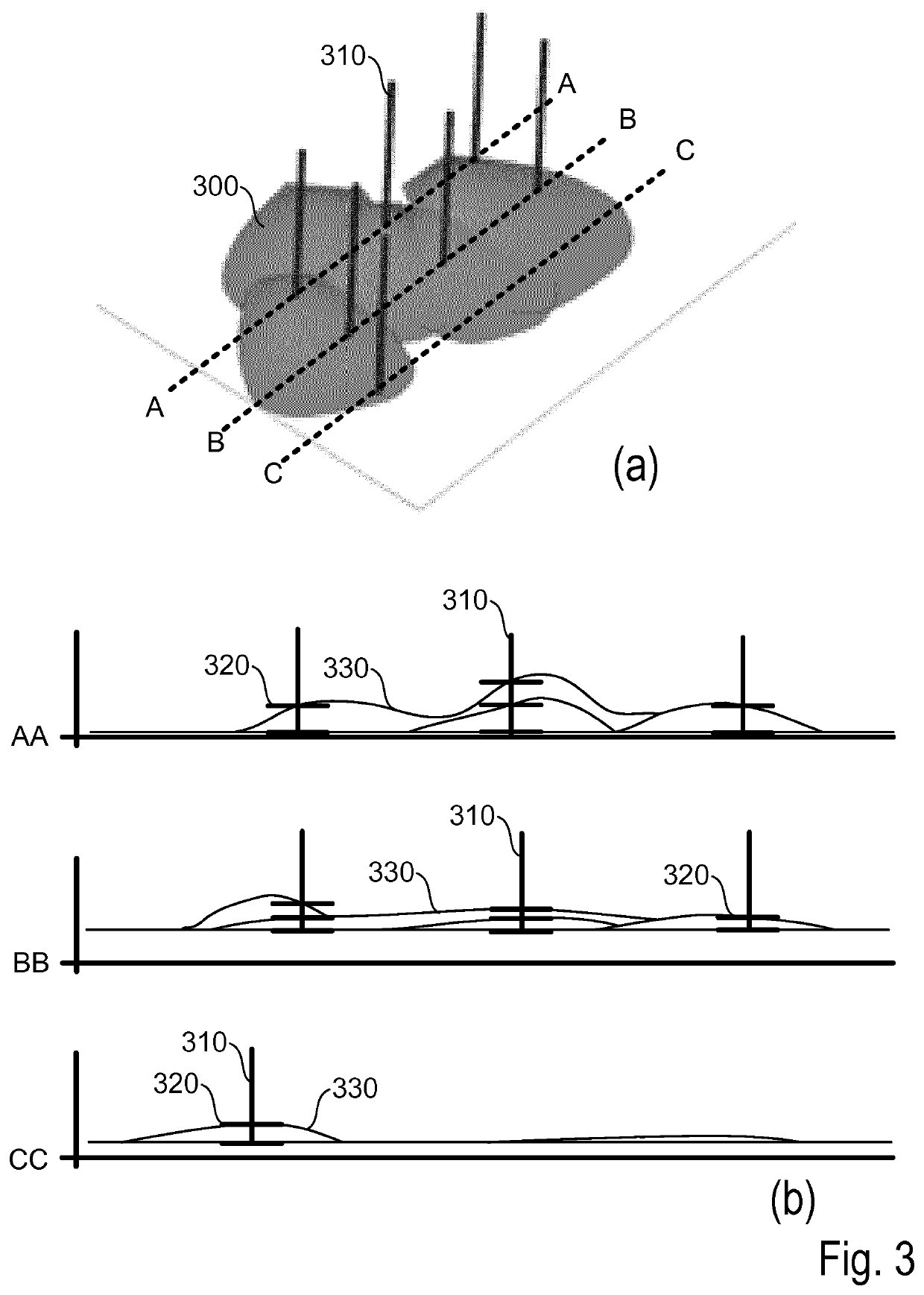Method of characterising a subsurface volume
a subsurface volume and method technology, applied in the field of methods of characterising subsurface volumes, can solve problems such as computational intensive previously documented approaches, significant time-consuming to produce conditioned geological models, and complex problems to solv
- Summary
- Abstract
- Description
- Claims
- Application Information
AI Technical Summary
Benefits of technology
Problems solved by technology
Method used
Image
Examples
Embodiment Construction
[0018]Known pixel-based geological modelling methods, such as Sequential Indicator Simulation (SIS) and Multi-Point Statistics (MPS) populate geological properties on a pre-defined mesh. Static geological data is populated into discrete mesh properties at static data locations, before the geological simulation, resulting in the data being directly honoured. However, with mesh-free geological modelling methods such as surface-based models (more generally referred to as parametric models), no mesh is defined within which to populate geological properties at the static data locations. Static data may comprise well log / core data and / or seismic data, in contrast to dynamic data (e.g., pressure and flow data)
[0019]The simplest method proposed to condition parametric models is to generate the geological domains using rejection sampling, but this is computationally intensive. Alternatively, the position and sequence of geological domains could be directly identified or interpolated between ...
PUM
 Login to View More
Login to View More Abstract
Description
Claims
Application Information
 Login to View More
Login to View More - R&D
- Intellectual Property
- Life Sciences
- Materials
- Tech Scout
- Unparalleled Data Quality
- Higher Quality Content
- 60% Fewer Hallucinations
Browse by: Latest US Patents, China's latest patents, Technical Efficacy Thesaurus, Application Domain, Technology Topic, Popular Technical Reports.
© 2025 PatSnap. All rights reserved.Legal|Privacy policy|Modern Slavery Act Transparency Statement|Sitemap|About US| Contact US: help@patsnap.com



